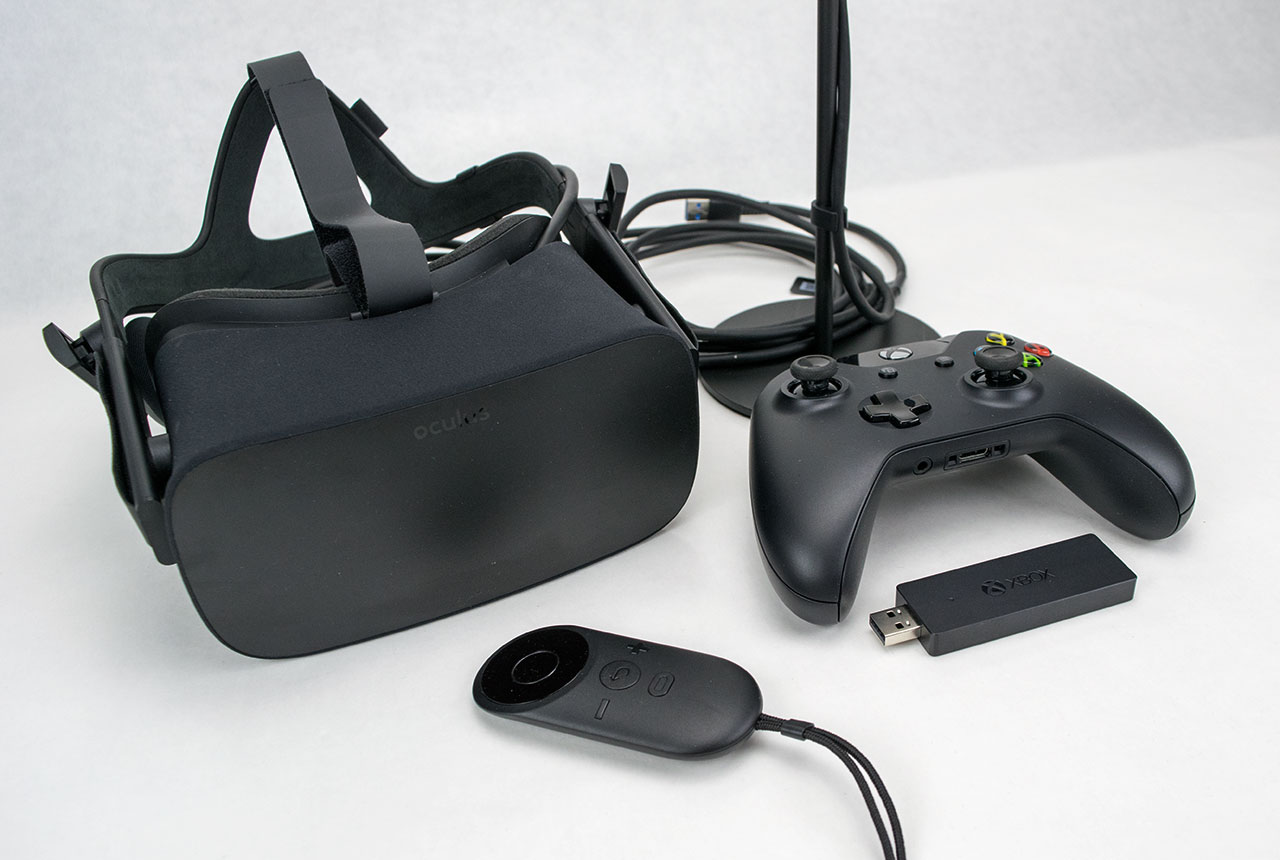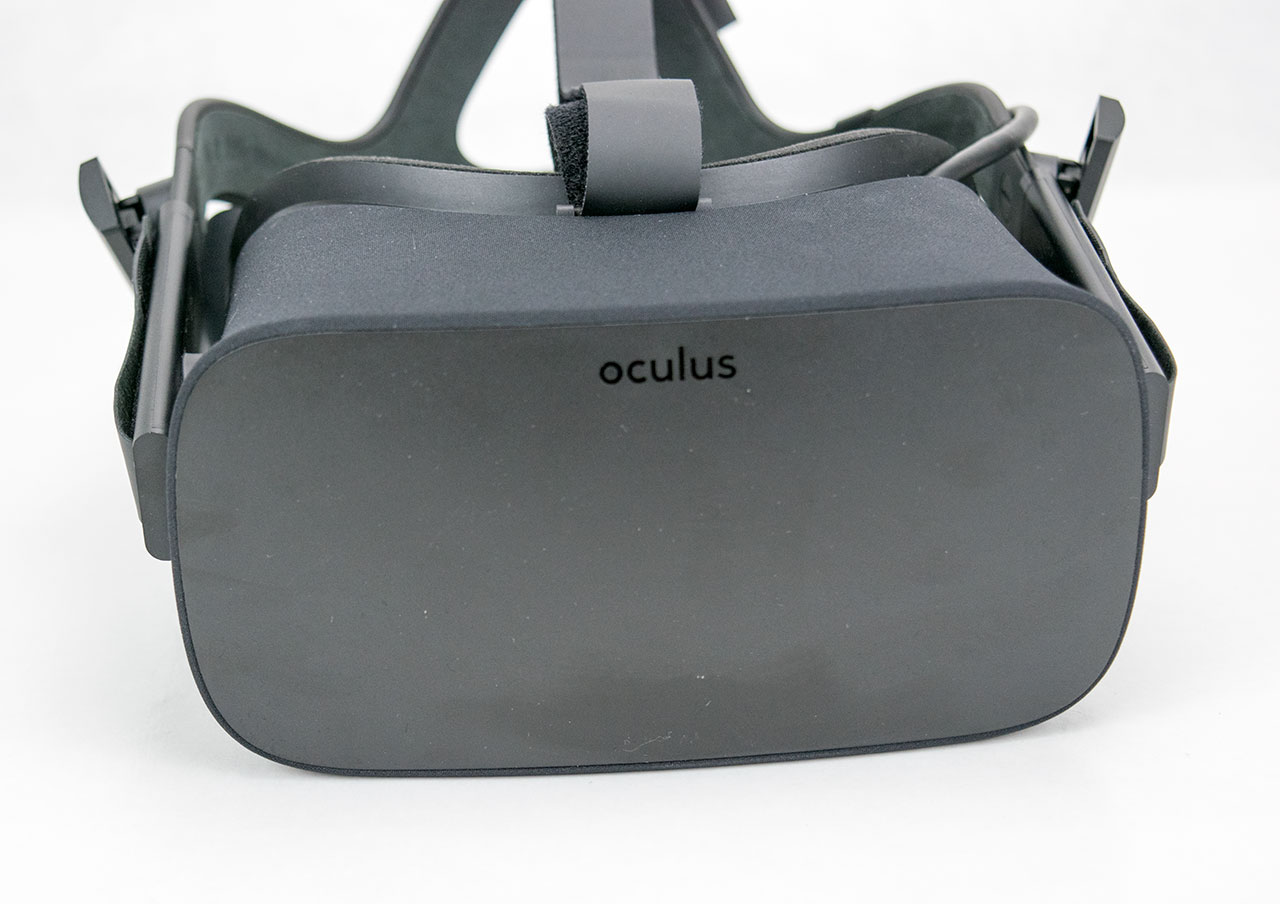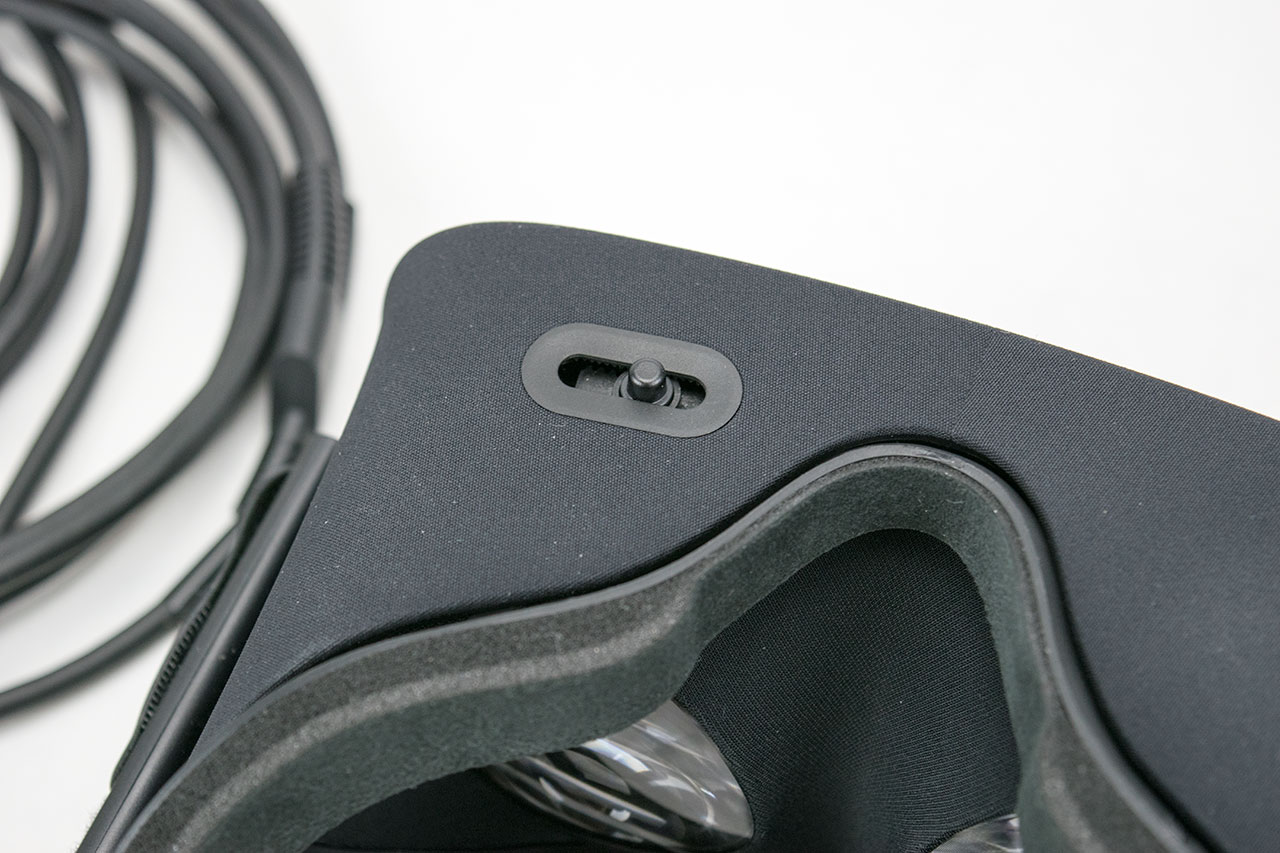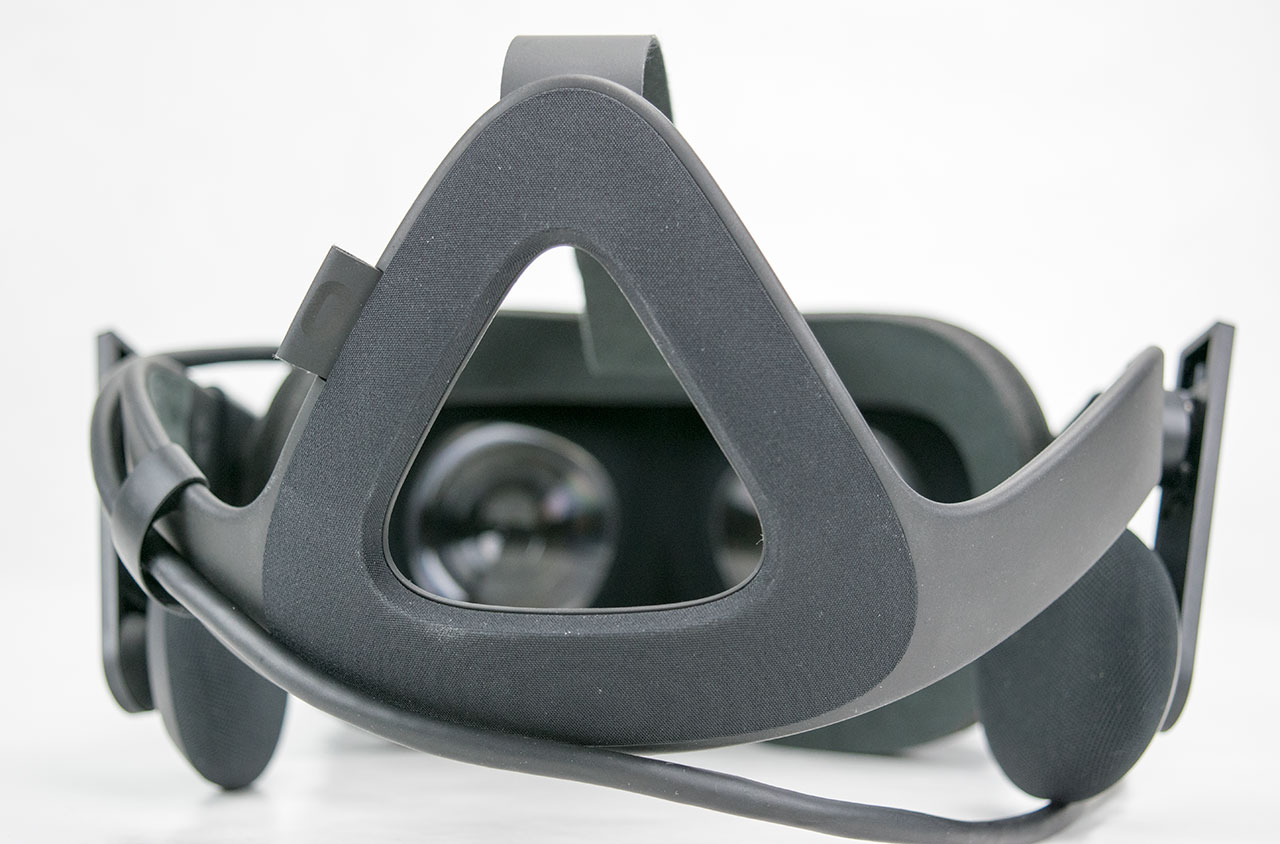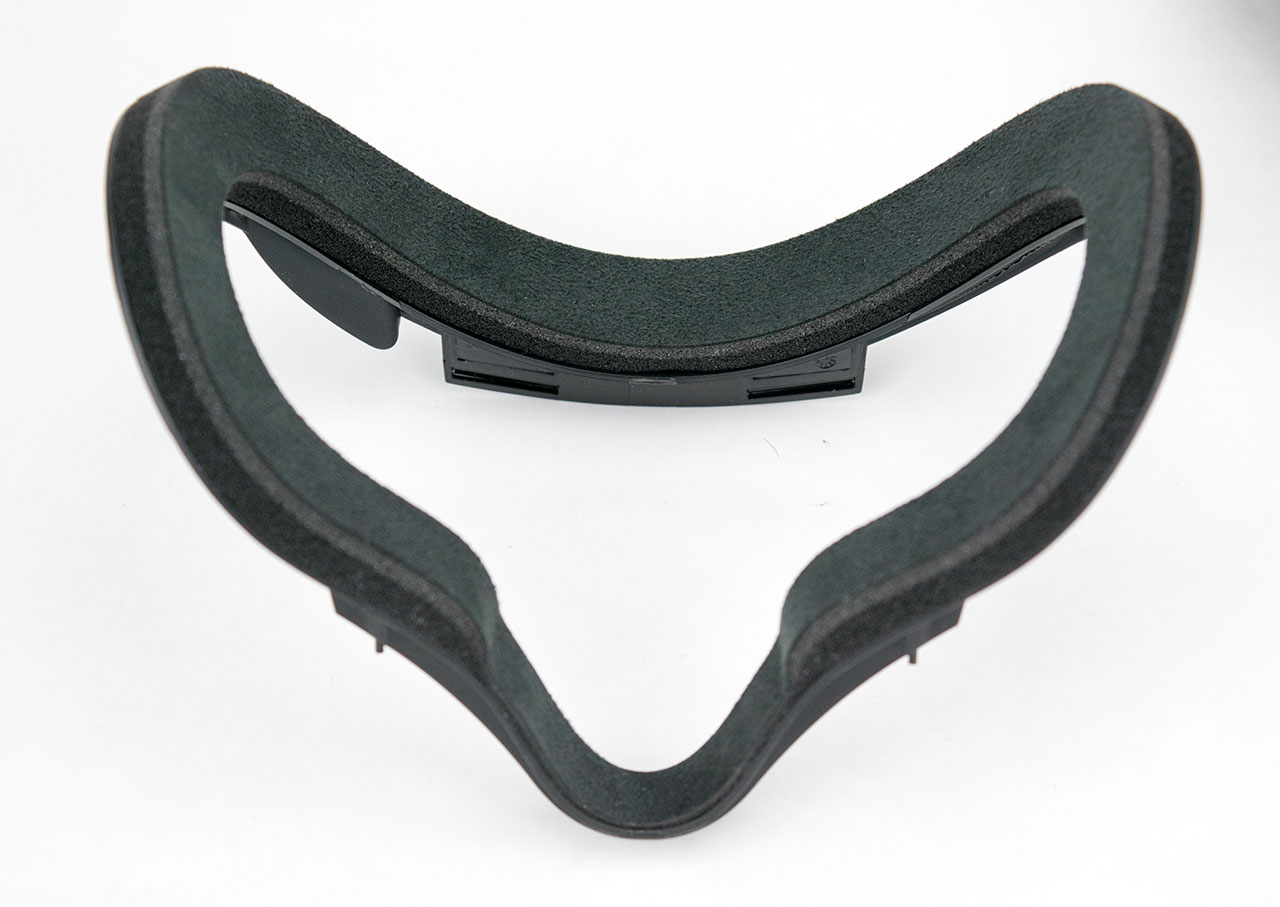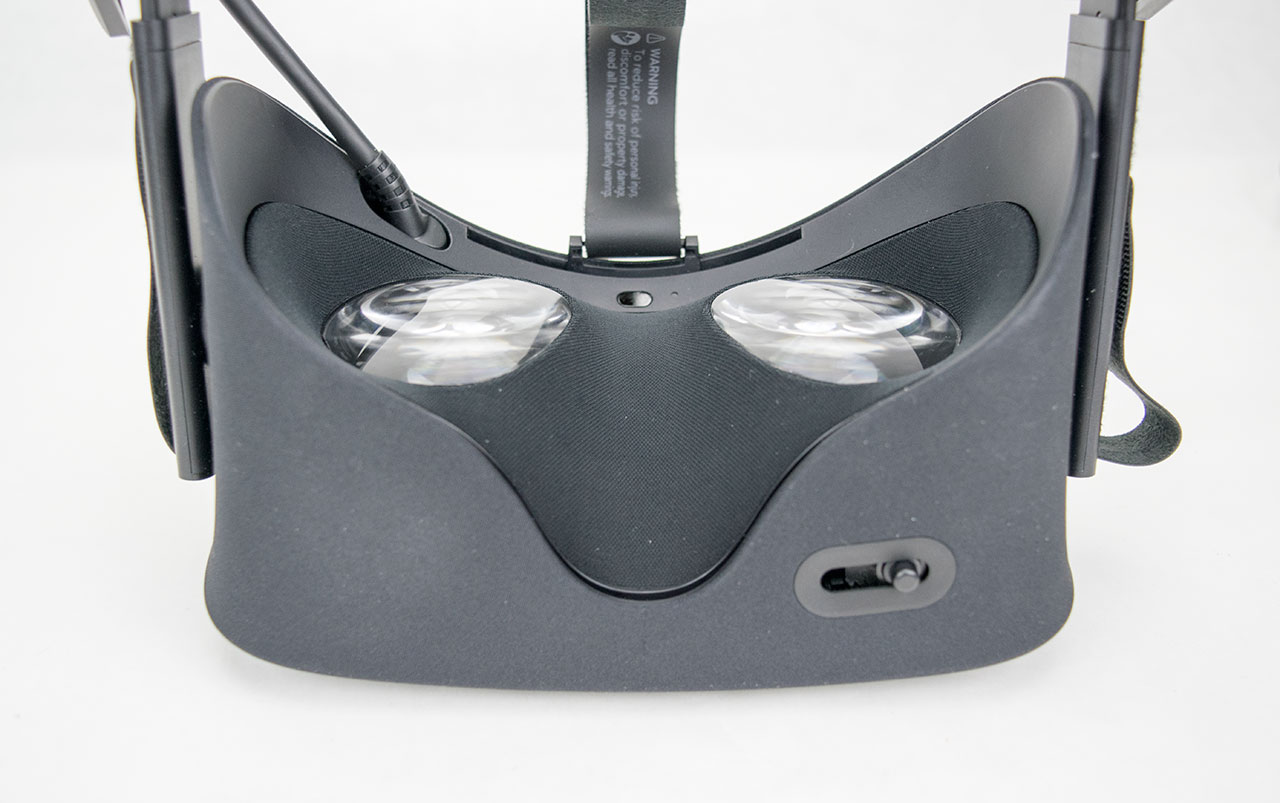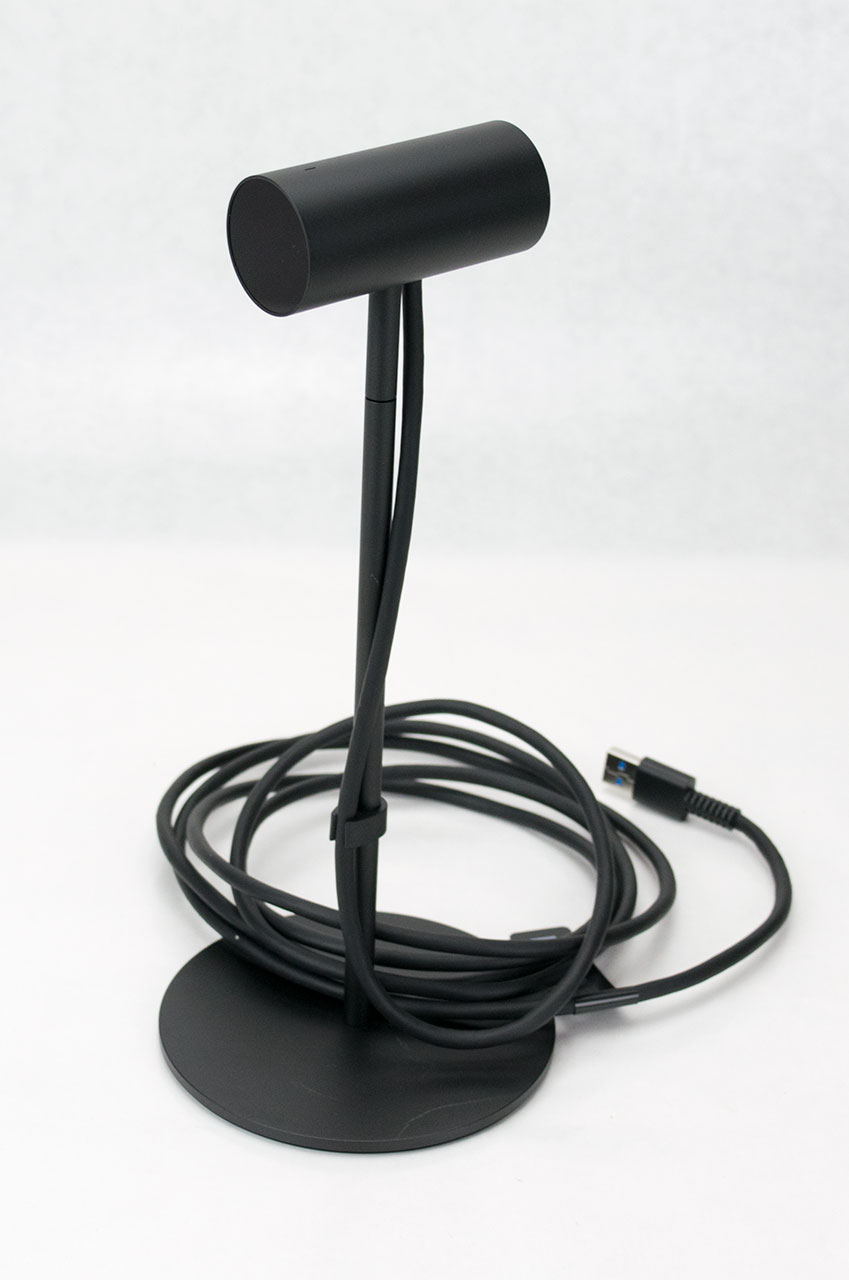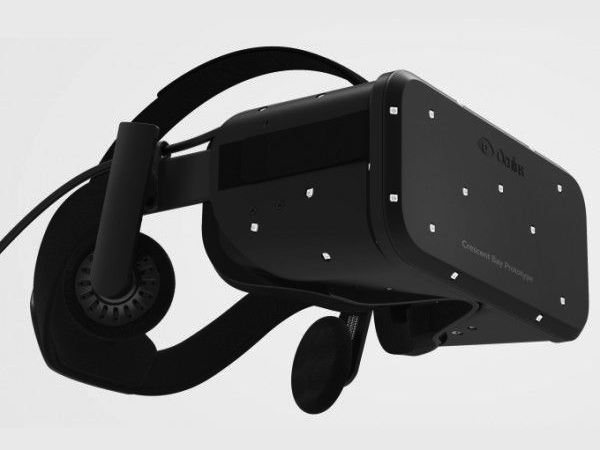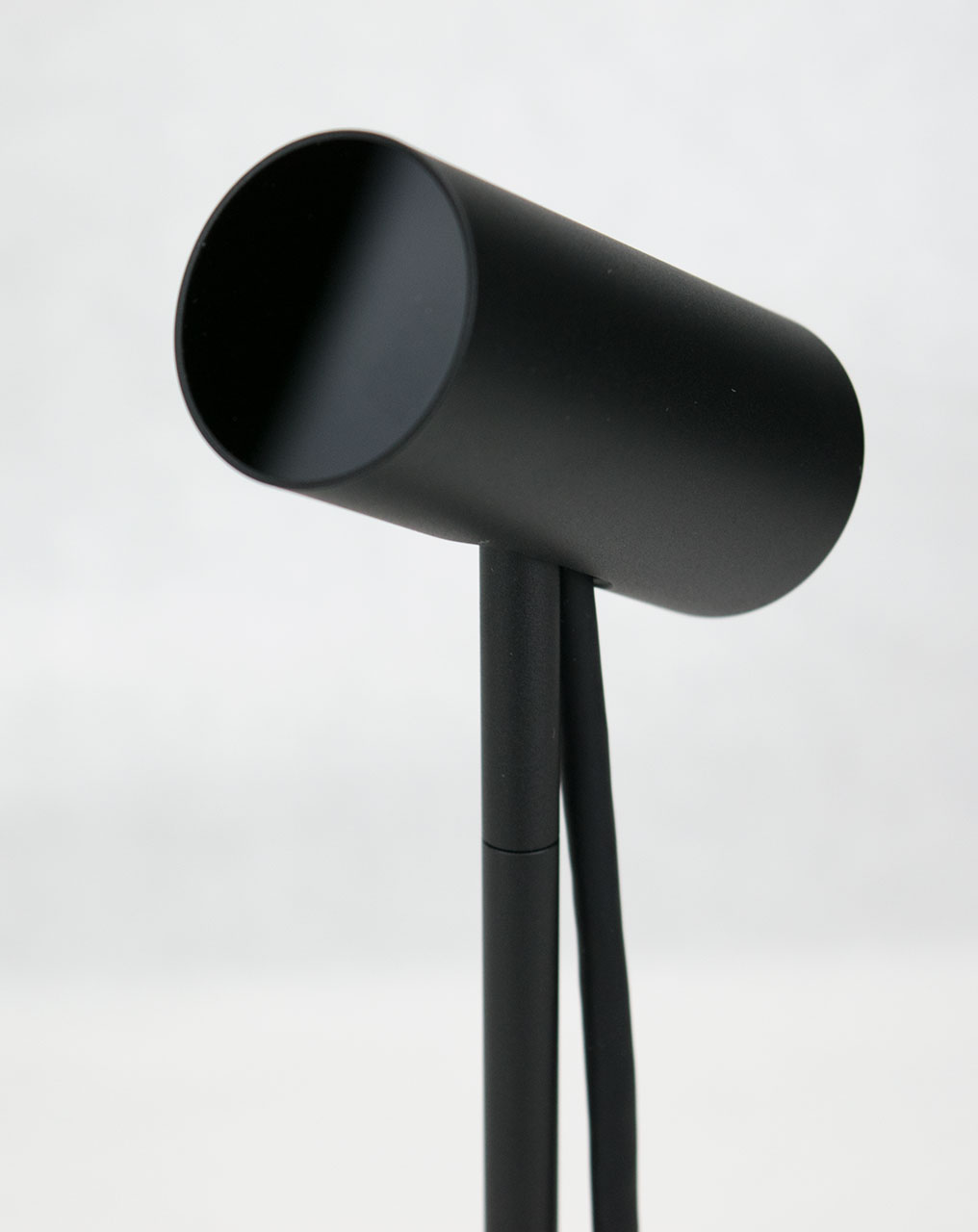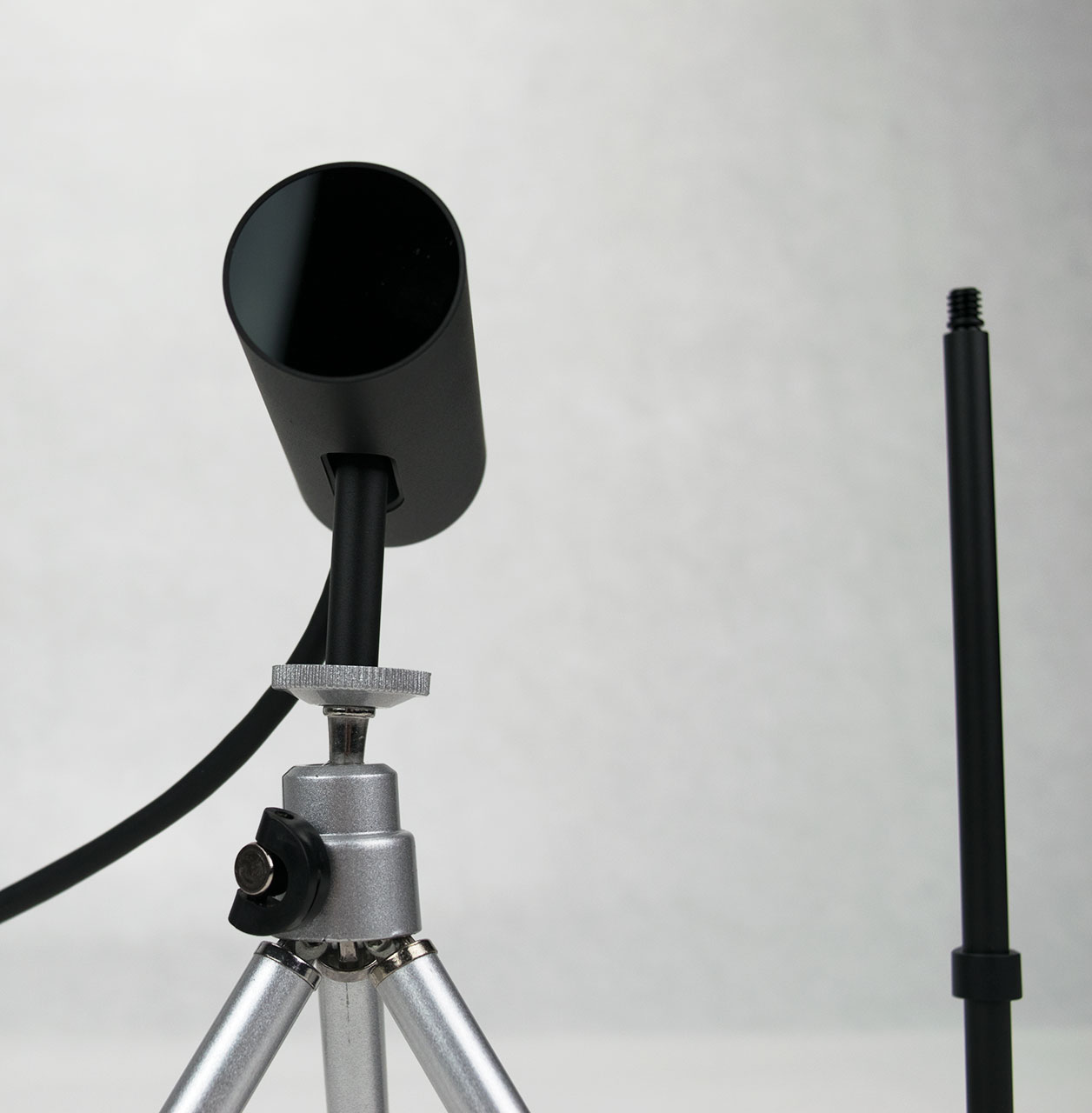The Oculus Rift Review
The Oculus Rift, the first high-end, consumer VR head-mounted display is now available, and it's poised to usher in a future of immersive experiences.
Why you can trust Tom's Hardware
What's In The Oculus Rift Box
The Oculus Rift's package includes several components. You get the Rift HMD, of course, and a cable that connects it to your PC. The tether is 4m long, and it splits off into USB and HDMI ends. The side that plugs into the Rift employs a proprietary plug.
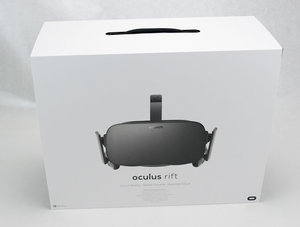
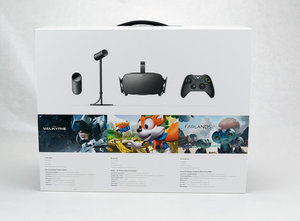
The Rift includes one Constellation tracker that sits on a pedestal designed to rest on your desk. It sends head-tracking information to your PC through a USB 3.0 cable (the 2.5m cable also powers the sensor).
Oculus announced a pair of controllers, called Touch, that will introduce hand tracking to the Rift platform. However, Touch won’t ship until the second half of 2016.
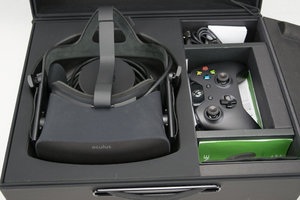
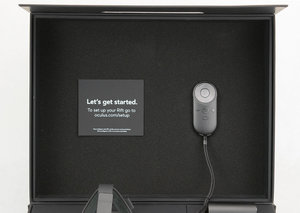
You also get an Oculus media remote that lets you control basic experiences like menu navigation, some games and non-interactive content. It exposes a D-pad, navigation disc, volume controls, selection button, back button and an Oculus button that takes you back to the Home environment. The media remote features the same buttons found on the GearVR HMD, so anything ported from that platform should work natively.
For more involved gaming, Oculus partnered with Microsoft to include an Xbox One controller and a wireless USB receiver. This is the default input device for Rift games, at least as they exist today. Oculus says that most of the developers who started working on VR content using one of the early dev kits used Xbox controllers, so it made sense to add official support.
Oculus also bundles some free content with its Rift. You get Lucky's Tale, a third-person platformer akin to classics like Banjo-Kazooie or Crash Bandicoot, and two short films created in-house by the Oculus Story Studio (Henry, an animated short about a hedgehog on his birthday, and Lost, another animated short that demonstrates the Rift's audio and visual systems). Pre-ordered hardware also comes with a copy of CCP’s anticipated space dogfighting game EVE: Valkyrie, one of the few titles with a AAA price tag.
| Oculus Rift Box Contents | |
|---|---|
| Hardware | Rift HMD with integrated supra-aural headphones (removable) and mic Constellation tracking camera sensor with standWireless media remote |
| Cables | 4m HMD 2-in-1 cable (HDMI 1.3/USB 3.0, attached) 2.5m Tracking camera sensor cable (USB 3.0) |
| Controls | Xbox One Wireless ControllerWireless adapter for WindowsAA batteries (2)USB extender cable for wireless adapter |
| Miscellaneous | Cleaning clothRift carrying case |
| Downloadable Software | Lucky’s Tale game EVE: Valkyrie Founder’s Pack (available to Rift pre-order customers only) |
The Rift HMD
The final Rift HMD is a lightweight, head-mounted display that provides a fully immersed visual and auditory experience. As Oculus puts it, the Rift delivers a sense of “presence” within a virtual environment.
Get Tom's Hardware's best news and in-depth reviews, straight to your inbox.
The hardware loosely resembles a pair of ski goggles, in that you wear it over your eyes and it straps to your head. The entire headset (except for the front plate), inside and out, is wrapped in a special fabric that conforms to the odd-shaped surface of the HMD. Oculus says this fabric helps keep condensation build-up to a minimum. It also gives the HMD a pleasing aesthetic design. The soft fabric surface used for the outside feels vaguely similar to a fine denim material. For more on what went into wrapping the Rift in this material, check out Oculus' Uncompromising Obsession With Hardware.
Inside the Rift, we find two low-persistence AMOLED displays developed by Samsung. These screens have a native resolution of 1080x1200 (totaling 2160x1200 between them) and a 90Hz refresh rate. That high refresh is important. In a 2014 interview with Gamasutra, Oculus CTO John Carmack said that 90Hz is the magic number where 95 to 99 percent of people don't notice the refresh rate in VR anymore, though it sounds like there is good reason to push for even higher rates in the future.
The display panels are isolated by cones that reach from the screens to the lenses, so your left eye only sees the left screen and your right eye sees only the right screen. Oculus uses custom hybrid Fresnel lenses to alleviate the screen door effect, though some of us are still sensitive to the effect on shipping hardware. But the company says it designed the lenses to match the HMD's screens as well as possible, yielding optimal clarity, particularly at the sweet spot in the center.
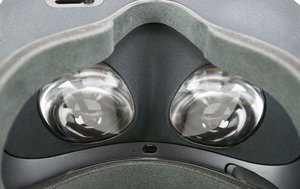
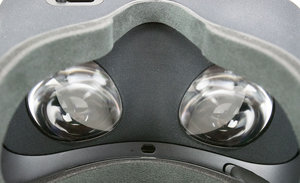
The Rift includes an interpupillary distance (IPD) adjustment dial that lets you specify the correct distance between lenses, calibrated to your eyes. This is similar to a pair of binoculars, but more complex in that the lenses and displays move together with the adjustment. Oculus enables an IPD range between 58mm and 72mm to cover most adult faces (the average is 64mm). This bottom end of that scale won't account for young children, which is one of the reasons Oculus suggests an age rating of 13+. That could change in the future, though. In an interview with Code, Oculus CEO Brendan Iribe drew a parallel with Facebook's similar age requirement, saying that represented a good place to start. However, he expressed interest in an Oculus for kids once there was more confidence in the health and safety side of VR.
Oculus uses a stretchy material with properties similar to Spandex inside of the Rift, helping it breathe (moisture vapor passes through it) and conform to adjustments you make. The entire inner structure is covered by this material.
| Oculus Rift Specifications | |
|---|---|
| Display Type & Size | Dual low-persistence AMOLED (PenTile subpixel matrix) |
| Display Size | TBA |
| Resolution | 1200 x 1080 (per eye) |
| Refresh Rate | 90Hz |
| Field of View | ~100-degrees |
| Lens Type | Hybrid Fresnel |
| Lens Adjustment | IPD (58-72 mm), lens-to-eye distance (adjustable with optional glasses spacer) |
| Sensors | Accelerometer, gyroscope, magnetometer |
| Tracking Technology | 6 DOF Constellation camera optical 360-degree IR LED tracking |
| Integrated Camera | No |
| Audio | Microphone, integrated supra-aural 3D spatial audio headphones (removable) |
| HMD Ports | Proprietary headset connector (HDMI/USB 3.0) |
| HMD Cable Length | 4 m |
| Materials Used | Plastic, IR-transparent fabric, glass, foam rubber |
| Dimensions | ~171 (~216) × ~102 mm(W (width including headphones) × D) |
| Weight | 470g (excluding cable) |
Audio Is Not An Afterthought
Oculus also developed a high-quality audio system for the Rift. In virtual reality, sound is just as important as the visual aspects. VR immerses you in another world, but that world isn’t believable if the audio cues aren't realistic. Thus, Oculus had to develop specialized audio components to give developers the tools they needed for adding believable sound to their creations.
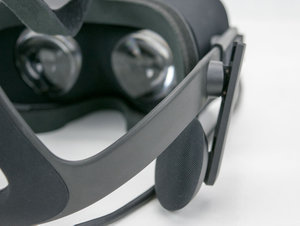
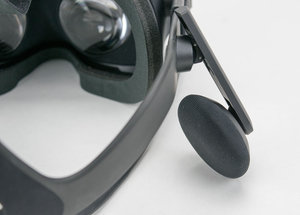
Oculus installs its own digital-to-analog converter (DAC) and microphone inside the headset, and the company provides a pair of integrated headphones attached to each Rift. These open-back headphones have been tuned to work specifically with Rift games, and Oculus provides developers with an SDK for the audio system. It's no small feat that Oculus designed the headphones to work with a broad range of head shapes, but still provide every wearer with an uncompromised experience, all without sacrificing comfort. The headphones are attached to the head strap, utilizing pivot, swivel and height adjustments to rest right where you want them. Spring tension helps keep them snug against your head.
Oculus encourages developers to optimize for the integrated headphones, though you're not explicitly limited to them. The company knows that some customers will want to use their own headphones (or gaming headset). So, the Rift's integrated sound system disengages from the head strap with some help from an included tool if you'd rather substitute in another audio device. You'll simply have to run an additional cord to connect it; the Rift does not include a pass-through audio jack.
Proper Weight Distribution
The Rift is actually a fairly small device. Its body measures just 6.75 inches wide (or 8.5 inches, counting the headphones) and 3.5 inches tall (add half an inch for the face gasket). We weighed the Rift at 470g with its cable disconnected, exactly matching Oculus' specification.
To keep the HMD securely in place, Oculus engineered a three-point strap that redistributes its weight over your entire head, rather than resting on your face. On several occasions we've heard Oculus mention that this is imperative to making the Rift comfortable, a critical first step before VR can become immersive. The upper strap is made of a flexible material that's almost leather-like in texture. It's too early to tell, but the strap does seem to be durable. Much of the top strap is covered by Velcro to accommodate as many head sizes as possible.
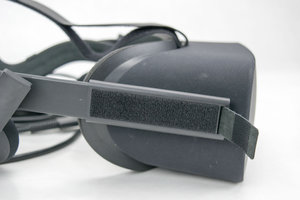
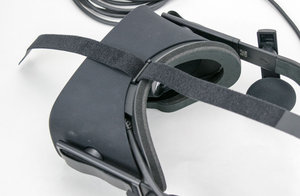
The two side straps are made of a rubber-like material that flexes, but doesn't lose shape. Oculus lines the inside of each strap with a suede-like material that is soft to the touch. The straps have Velcro adjustment points at the front, which let you customize their tension to fit your head. Those side straps attach to the headset through a spring mechanism, so even after fitting them for use, you can remove the headset comfortably without undoing the Velcro. If you're the only one using the Rift, you should be able to set the strap positions once and not have to mess with them again.
The rear brace of the strap is triangular, and made of a somewhat rigid plastic. Its outside surface is covered by the same fabric as the device's body, covering another constellation of LEDs to help enable the Rift's 360 degrees of head tracking. The inside is covered in the soft-touch material found elsewhere on the strap. The rigid triangle sits low on the back of your head, playing an important role in balancing the HMD's weight. Its contribution makes it possible to wear the Rift for hours without the discomfort you'd expect from half a kilogram tugging on your face.
Consequently, the Rift puts some pressure on the back of your head and rests gingerly on your cheeks. To ensure its unobtrusiveness, Oculus lines the shaped face plate with a soft foam that absorbs much of the force needed to keep the HMD securely in place. The foam is conformant, helping to reduce light bleeding in from external sources. The face plate is also made of a soft, flexible plastic that helps the Rift mold to your facial structure.
Just as there is a large range of interpupillary distances that need to be compensated for, humans sport quite the variety of facial features, too. Oculus designed the Rift with a removable face plate that you can swap out for a different size. This will also help address wear and tear. You’ll be able to buy replacements as the foam cushion shows signs of age. It'll also better accommodate customers who wear glasses. Although our Rift sample didn't include an extra, Oculus has mentioned that it plans to sell face plates designed to account for wider glasses.
Constellation Tracking System
Tracking is imperative to an immersive VR experience. Samsung's Gear VR uses gyros and inertial sensors, which the Rift does as well. But a key differentiator is the Rift's positional tracking, which lets you lean in, peek around corners and even duck down to the ground. To an extent, you're able to move around your play space. As you might imagine, getting this right has proven challenging. If what you see on-screen is misaligned from where you're positioned, the effect can be jarring.
Oculus developed its own tracking system that it calls Constellation. The feature is enabled by a sensor that sits on your desk and detects an array of IR-emitting LEDs cleverly hidden under the Rift's fabric exterior. The LEDs are embedded through the front, sides, and back of the HMD, again, facilitating 360 degrees of tracking (that is, you can turn around and the sensor still knows your position).
The Constellation system includes just one sensor for the Rift, though the same technology will be used to track the Touch controllers as well. You'll get a second sensor with those to ensure occlusion-free operation. In contrast, HTC's Vive, which provides room-scale tracking, comes with two IR emitters to place on either side of your room.
The tracking sensor is attached to a wide pedestal base. It's on a swivel that lets you adjust for whether you're standing or sitting.
Oculus also considered the possibility that you may not want to leave the sensor on your desk. Perhaps you're using the Rift where there is no desk, or you'd prefer a permanent wall mount. The Constellation sensor can be removed from its pedestal stand and secured to a standard tripod or speaker mount. The pole holding the sensor comes apart, exposing standard camera mount threads.
| Sensor: | Constellation |
|---|---|
| Sensor mount: | Integrated stand, 1/4-20 camera mount compatible |
| Tracking: | Integrated constellation tracking: IR LEDs under fabric shell |
| Sensor cable: | 2.5m cable |
MORE: Best Graphics Cards
Current page: What's In The Oculus Rift Box
Prev Page Introduction & Overview Next Page System Requirements & Setup ProceduresKevin Carbotte is a contributing writer for Tom's Hardware who primarily covers VR and AR hardware. He has been writing for us for more than four years.
-
ingtar33 My main concern about the Rift isn't addressed in this article. And that's if it will become Orphanware. You see, there is a fraction of the gaming public who has a computer able to play games on a Rift, and an even smaller number of those people who will spend $600 to buy a Rift.Reply
This leaves the game manufacturers in a tough spot. They want to make and market games that will play on the most pcs possible. So my fear is that in 6-18mo we'll see the end of titles that will play on the rift, and nothing new in the pipeline as those titles will prove to be financial duds to the industry, thanks to the tiny install base.
And then the Rift will become Orphanware, a product without a market or market support. -
Realist9 I stopped reading in the "setup up the rift" when I saw:Reply
1. "you're asked to set up an account..."
2. "you're prompted to configure a payment method..."
What am I setting up an account for, why do I have to 'sign in', and what am I setting up a payment for?? -
kcarbotte Reply17729616 said:My main concern about the Rift isn't addressed in this article. And that's if it will become Orphanware. You see, there is a fraction of the gaming public who has a computer able to play games on a Rift, and an even smaller number of those people who will spend $600 to buy a Rift.
This leaves the game manufacturers in a tough spot. They want to make and market games that will play on the most pcs possible. So my fear is that in 6-18mo we'll see the end of titles that will play on the rift, and nothing new in the pipeline as those titles will prove to be financial duds to the industry, thanks to the tiny install base.
And then the Rift will become Orphanware, a product without a market or market support.
Time will be the ultimate test for the Rift, but I don't see that fate coming.
The companies working in the VR industry are incredibly excited about the prospect of this new medium. When the biggest companies in the world are pushing to bring something to market in the same way, it should be telling of the potential these companies see.
Facebook and Oculus have not been shy about saying that adoption will be slow. If developers haven't been paying attention to that, then they will surely fail. Most understand that the market will be small, but in the early days of VR the market share will be large, as most people buying in this early will have a hunger to try out as much of the content as possible.
I've also spoken with several VR developers in person about this issue. Most, if not all of them, are prepared for low volume sales. This is precicesly the reason why you won't see many AAA titles exclusively for VR for a while. The games will be shorter, and inexpensive to produce.
VR games are mostly being developed by indie shops that have little overhead, and few employees to pay. They are also mostly working for minimum wage, hoping to see bonuses at the end of the year from better than expected sales.
I don't think we have any chance of seeing the Rift, or the Vive, fall into the realm of abandonware. Tools are getting easier to use (VR editors), and cheaper to access (Unity, Unreal Engine, Cryengine are all free for individuals.) The resources for people to build for this medium are vast, and there's no better time to be an idie dev than now. VR is a new market, and anyone has as much chance as the next to make the next big killer app. It resets the industry and makes it easier to jump into.
VR will not be dominated by the likes of EA and Activision for some time now. It opens the door for anyone with a good idea to become the next powerhouse. That will be a very compelling prospect for many indipendant, and small development firms.
-
Clerk Max No mention of VR motion sickness or kinetosis in this conclusion ? This is a major showstopper, preventing more than a few minutes of immersion for most people.Reply -
kcarbotte Reply17729694 said:I stopped reading in the "setup up the rift" when I saw:
1. "you're asked to set up an account..."
2. "you're prompted to configure a payment method..."
What am I setting up an account for, why do I have to 'sign in', and what am I setting up a payment for??
If you kept reading you'd know the answer.
You are signing up for Oculus Home, the only way to access content for the Rift.
As soon as you put the headset on, the sensor inside it initializes Oculus Home. Without an account, you can't access any of the content. It's exactly like accessing content on Steam. You need to sign in.
That's the same reason you need a payment method. There's free games, so you can skip it, but you can't access any of the paid content without an Oculus Home account.
If SteamVR ends up supporting the final rift, then you may be able to play other games on it, but at this time, you need Oculus Home for everything on the Rift, including existing games like Project Cars. -
Joe Black I get the sense that it is where 3D gaming was right after Windows95 and directX launched.Reply
That's cool.Believe it or not you actually did need a relatively beefy PC for that back in the day. It was not for everybody yet. -
bobpies ReplyWhat am I setting up an account for,
to download and play the games
why do I have to 'sign in'
to access your games
and what am I setting up a payment for??
to buy the games. -
kcarbotte Reply17729767 said:No mention of VR motion sickness or kinetosis in this conclusion ? This is a major showstopper, preventing more than a few minutes of immersion for most people.
Read page 8 if you want to know about my motion sickness experience. Only two games gave me any kind of trouble, and both of them were caused by first person experiences. Its well established that moving around in first person is not comfortable for many people. The motion messes with your brain because you aren't actually physically moving. actually sitting, while your character moves around isn't comfortable at all for me. Some people don't have trouble, but the comfort levels are there for a reason. Both of those games are listed as intense experiences, so even Oculus acknowleges that that some folks will get sick.
All of the 3rd person games that I tried, and the games with cockpits (Radial G, Project Cars, Eve: Valkyrie) are all very comfortable.
We'll talk more about motion sickness and effects of being in VR for extended periods over the coming weeks. So far, with the limited time we've had with it, I've only used it for less than 10 hours total. There's plenty of games that we've not even fired up yet, so a full discussion about getting motion sickness seesm premature.
-
kcarbotte Reply17729831 said:I get the sense that it is where 3D gaming was right after Windows95 and directX launched.
That's cool.Believe it or not you actually did need a relatively beefy PC for that back in the day. It was not for everybody yet.
That's a good comparison.
I like to use the first Atari console as a comparison. This is the dawn of a new medium that people don't yet understand. It will be expensive, and not for everyone in the early days, but look at where video games are today. If everyone had the same opinion about Atari back then, as many people seem to feel about VR, the entire video game industry wouldn't have existed as we see it today.
VR will be similar. It will take a long time to get mass adoption, and the road there will have plenty of changes and advancements, but it's definitely going to happen. VR is far too compelling and has far too much potential for it not to. -
Realist9 The 'conclusion' page is really spot on. Specifically, the parts about AAA titles and casual audience.Reply
So, does the release version of the Rift still require graphics settings in Project Cars to be turned down with pop in and jaggies? (read this in a Anand article from 16 Mar).
